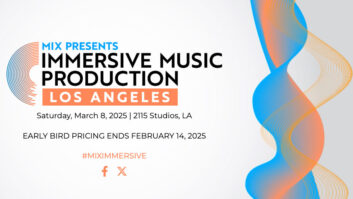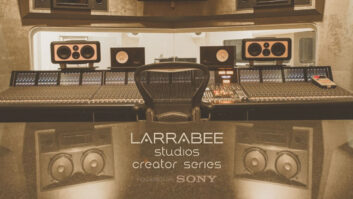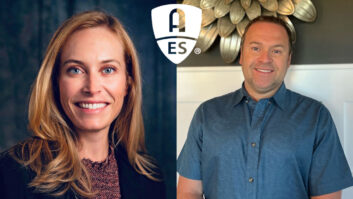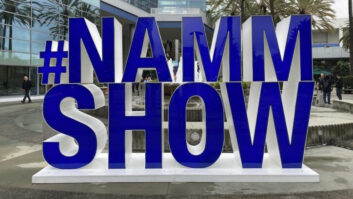When I was a kid, I used to play a daydreamer’s game of “where will I be?”—when I’m 20, 30, in the year 2000, etc. At the time, the space race was on and music, technology, sex and equality were all establishing new orbits, making all things look new. Looking back, I was never even close to the right answer, but it was fun nonetheless.
In some cases, it’s easy to predict where audio production is going by looking at the breadcrumbs left by others. For example, you can now see a growing list of audio companies looking at browser-based models for delivery. The newest is EastWest’s Composer Cloud offering 9,000 virtual instruments, plus new releases, for $49.99 per month. I’ve been flogging this model in my column for the past two months, and this is an example of where the model works and will thrive.
But what else? What’s not so easy to predict? What’s on my wish list for the near future? More bandwidth now! I keep hearing that Google Fiber is right around the corner, but it’s not happening fast enough. Regional battles are going on behind the scenes fueled by cable giants who would rather Google stay off their turf, and it’s clogging the pipes. It’s obvious that this is the future, so let’s get it done. Not only will my Netflix movies stop spinning and/or riding the pixel-quality roller coaster, but high-definition audio will have a wide open door into the home, and cloud-based production will become speedy and practical. It’s a winner for audio quality, music, and production.
While the connection quality in the U.S. is on par with the rest of the world, we’re still not in the top 20 in speed, with Singapore, Hong Kong, South Korea, Sweden and others way ahead. And we’re not moving up soon. Right now, Provo, Kansas City, and Austin currently have Fiber, and there are only plans for five other cities in the works. I’d grade this progress a C minus.
The future of DAWs? Some solutions are simple. I would love a new and better Strip Silence tool in Pro Tools. At the very least, one where you could save settings like a plug-in. It’s a time suck when stripping out similar tracks in different songs within a project and having to reset the GUI every time. And speaking of Pro Tools, how about being able to fade in/out a group of selected clips using the fade tool? Not the batch fader where you guess the length in milliseconds, but viewing the fades en masse while referencing the waveform. Why not add batch fade choices for different lengths of fade in/outs on separated clips—it’s currently one size fits all.
And now for the hard stuff: how about finally setting a cross-platform documentation standard? I know it’s difficult to digitally document the writer, engineer, tech details, musicians, plug-in signal flow and settings in a session, but wait. . . I’m joking . . . it’s metadata. John Spencer, BMS/Chace, and the P&E Wing have been pushing this “DAWcumentation” call button for a dozen years but the elevator to the future has not arrived. It’s not bogged down by technology, but by a common decision to get it done on the manufacturing side.
That’s my voice, but how about yours? This month, on July 11 at Summer NAMM at Nashville’s Music City Center, there will be six hours of organized prognostication on the show floor at the A3E conference. The Advanced Audio + Applications Exchange (A3E) is core sponsored by Microsoft and will explore the future through the eyes of trend-setting musicians, engineers, songwriters, developers, manufacturers and more. I’ve been asked to moderate the first panel after the keynote where Avid’s Marketing Director of Audio, Tony Cariddi, and myself will talk about Avid’s vision for the future.
A3E bowed for the first time last year in Boston with the P2 Conference (Production + Performance). Prior to the event, KVR hosted its fifth Developer Challenge aimed at plug-in, app, and soundware developers. The contest challenged all comers “to create and release a brand new free audio plug-in, application or sound library/pack/set that will benefit the community at large.” The prize was some cash, and the opportunity to present the work at A3E P2. First prize went to Acon Digital for its Multiply chorus effect plug-in. Each voice in Multiply uses a phase randomizing filter to avoid nasty comb filter effects. A3E and KVR are just two examples of how we can manage, and have a horse in an always-unpredictable race to the future.
Where will we be in 2020? 2025? Come by the A3E Conference if you’re at Summer NAMM and find out. Ping me on Facebook with questions for Tony and I’ll consider them for my list. We can all make wishes about how we’d like to work, but getting involved in the dialog at events like A3E brings the power to have our voices heard. Speak up!







